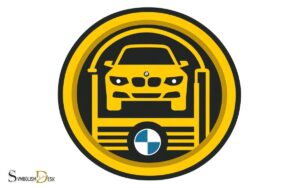Car Crash Symbol on Dashboard: Airbag Deploying.!
When you see a car crash symbol on your dashboard, it’s typically indicative of an issue with your vehicle’s airbag system. This symbol usually resembles a passenger with a circle in front representing an airbag deploying.
It’s crucial to address this promptly as it signifies a potential malfunction in the airbag system, which could affect the safety of the vehicle’s occupants in case of an accident.
The car crash symbol, or airbag warning light, is an important safety feature designed to alert the driver to a possible issue with the car’s supplemental restraint system (SRS).
This system includes airbags and all the connected components required for their proper deployment.
When the symbol is illuminated, it could mean several things:
- There might be a fault in the airbag sensors.
- The airbag modules may not be communicating effectively.
- The system’s diagnostic module could have detected a problem during self-tests.
- There could be an issue with the wiring or connection to the SRS.
Here are reasons why the airbag light may come on:
- Electrical malfunction: Issues with the wiring, fuses, or connectors.
- Sensor failure: Impact sensors may be damaged or malfunctioning.
- Airbag malfunction: Actual faults in the airbag modules themselves.
- Control module problem: The airbag’s control unit has detected an issue or is not operating correctly.
If you see the car crash symbol, it is advisable to:
- Consult the vehicle’s manual: to understand the specific meaning behind the light.
- Seek professional help: to diagnose and fix the issue properly.
- Avoid driving if advised: in some cases, it might be unsafe to drive the vehicle until the problem is addressed.
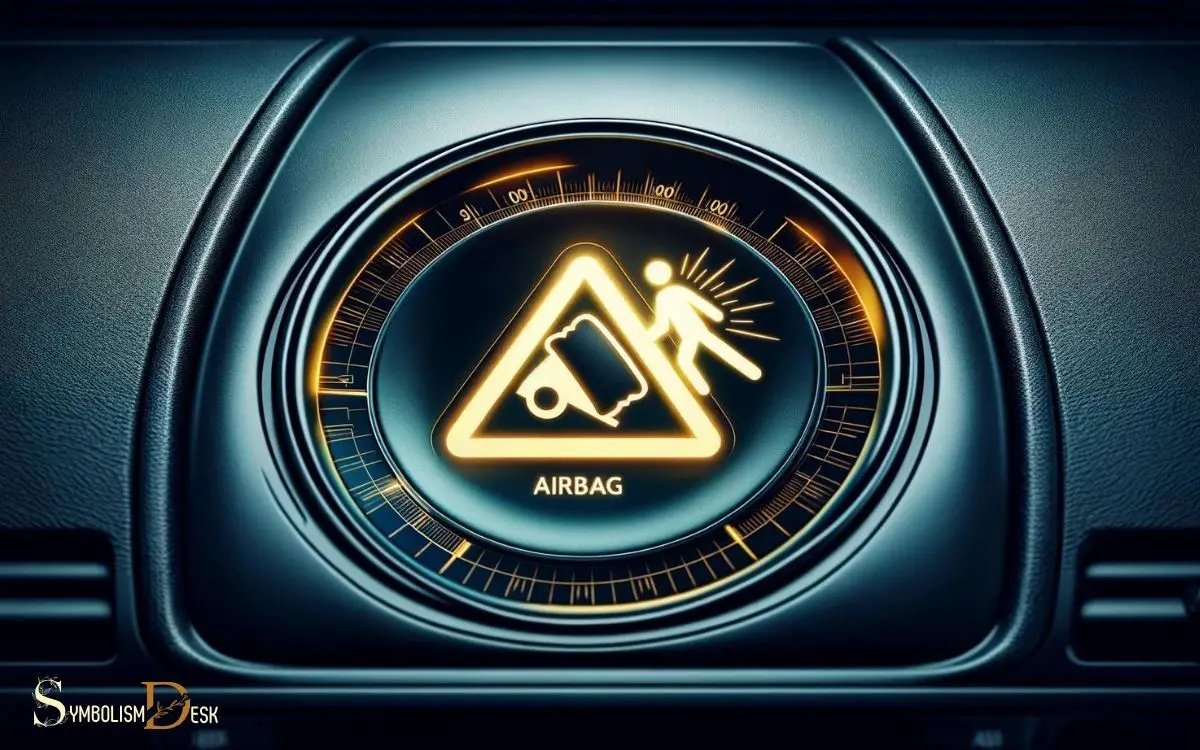
Key Takeaway
Understanding the Car Crash Symbol
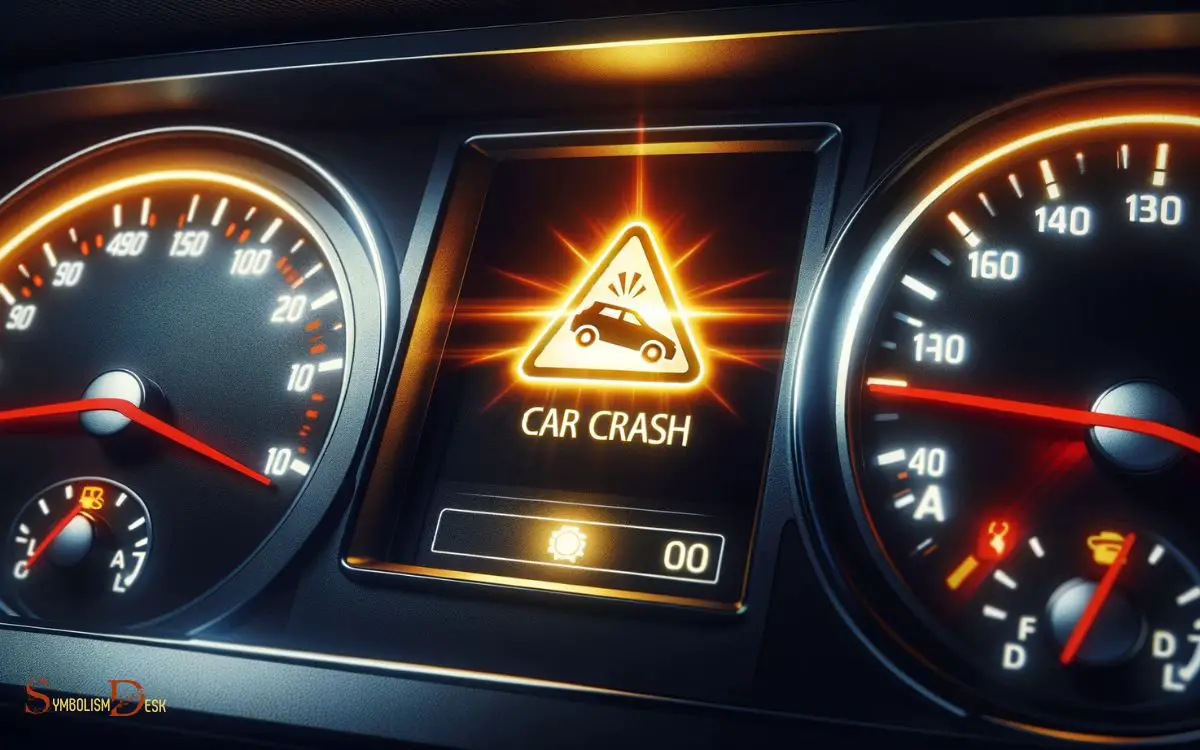
The car crash symbol on the dashboard indicates that the vehicle’s crash detection system has been activated.
This warning light is designed to alert the driver that the vehicle has detected a potential collision or impact.
When this symbol lights up, it is important for the driver to remain calm and attentive to the road, as the system may engage safety features like pre-tensioning seatbelts, activating the hazard lights, or even applying the brakes to mitigate the impact.
Understanding the car crash symbol is crucial for the driver’s awareness and responsiveness to potential danger on the road.
It serves as a proactive measure to enhance safety and reduce the risk of injury in the event of a collision.
Causes of the Dashboard Warning
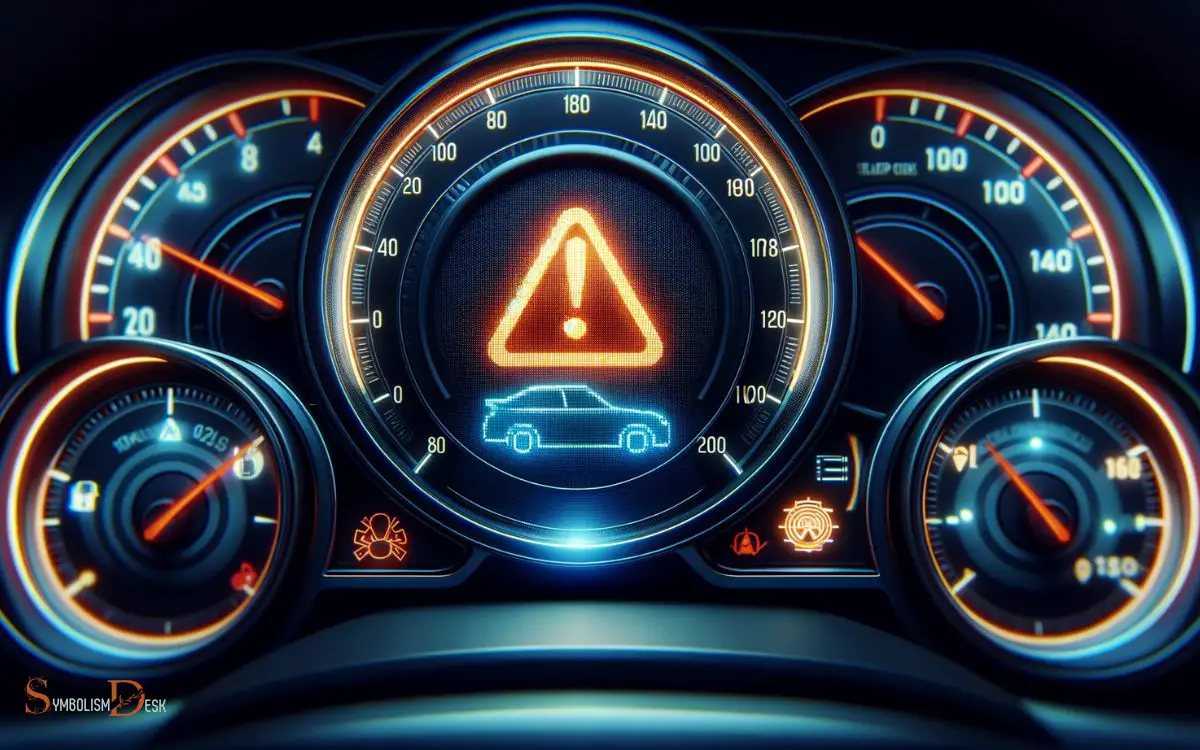
When the car crash symbol on the dashboard is illuminated, it is typically triggered by the vehicle’s sensors detecting an imminent collision or impact.
This warning is often caused by a variety of factors, including sudden changes in speed, proximity to an object or vehicle, or erratic driving behavior.
The sensors responsible for this warning are designed to detect potential dangers and activate the warning symbol to alert the driver to take immediate action to avoid a collision.
Additionally, malfunctions in the sensors or related systems can also trigger the dashboard warning, prompting the need for a thorough diagnostic inspection.
It’s crucial for drivers to promptly address the cause of this warning to ensure the overall safety and functionality of the vehicle’s collision detection system.
Importance of Immediate Action
When the car crash symbol appears on the dashboard, addressing the warning light promptly is crucial. Ignoring this warning can pose a potential safety hazard for the driver and passengers.
It is imperative to seek professional help to diagnose and resolve any underlying issues that triggered the dashboard warning.
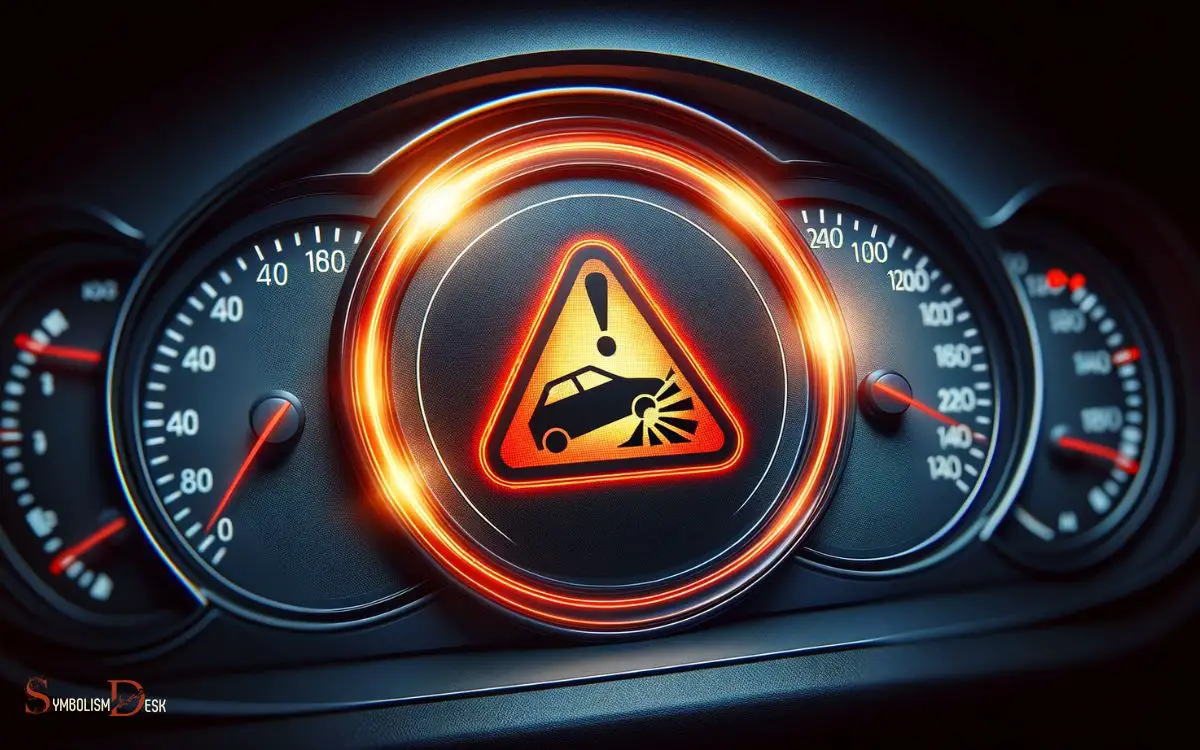
Address Warning Light Promptly
Upon seeing the car crash symbol illuminate on the dashboard, drivers should promptly address the warning light to ensure immediate action is taken. Ignoring this warning light may lead to serious consequences.
Here’s why addressing the warning light promptly is crucial:
- Safety: Prompt action can prevent potential accidents and ensure the safety of the driver and passengers.
- Immediate Assessment: Addressing the warning light promptly allows for an immediate assessment of the vehicle’s condition, helping to identify any critical issues.
Taking immediate action upon seeing the car crash symbol on the dashboard is essential for ensuring the safety and functionality of the vehicle. Drivers should promptly address the warning light to prevent any potential hazards and maintain the vehicle’s optimal performance.
Potential Safety Hazard
Upon seeing the car crash symbol on the dashboard, immediate action is crucial to address the potential safety hazard. Ignoring this warning could lead to severe consequences.
The car crash symbol typically indicates a malfunction in the vehicle’s safety systems, such as the airbags or seatbelt pretensioners. These systems are critical for protecting occupants in the event of a collision.
Therefore, it is of utmost importance to address this warning promptly. Ignoring the car crash symbol could result in the safety systems not deploying as intended in the event of a crash, significantly increasing the risk of injury or fatality.
As such, drivers should immediately seek professional assistance to diagnose and rectify the issue, ensuring that the vehicle’s safety features are fully operational.
Seek Professional Help
After noticing the car crash symbol on the dashboard, it is imperative that drivers seek professional help immediately to address any potential safety issues.
Seeking professional help is crucial to ensure the vehicle’s safety systems are thoroughly inspected and any underlying problems are addressed.
It is important to understand the potential risks associated with ignoring the warning symbol. Seeking professional help can provide drivers with a comprehensive assessment of the vehicle’s condition and ensure any necessary repairs are carried out promptly.
When seeking professional help, drivers should consider the following:
- Contacting a certified mechanic or authorized service center to diagnose the issue accurately.
- Requesting a detailed inspection of the vehicle’s safety systems to identify any potential hazards.
By promptly seeking professional assistance, drivers can mitigate safety risks and ensure the overall safety of their vehicle.
This immediate action is essential before proceeding to the subsequent section about checking vehicle safety systems.
Checking Vehicle Safety Systems
When starting the car, the driver should check the vehicle safety systems for any warning lights or indicators.
This includes the airbag system, anti-lock braking system (ABS), tire pressure monitoring system (TPMS), and electronic stability control (ESC).
Ignoring these warnings could result in compromised safety in the event of an accident or emergency maneuver.
Regular maintenance and inspection of these safety systems are crucial for ensuring the vehicle’s optimal performance and the safety of its occupants.
If any issues are detected, it is recommended to seek professional assistance to diagnose and resolve the problem promptly.
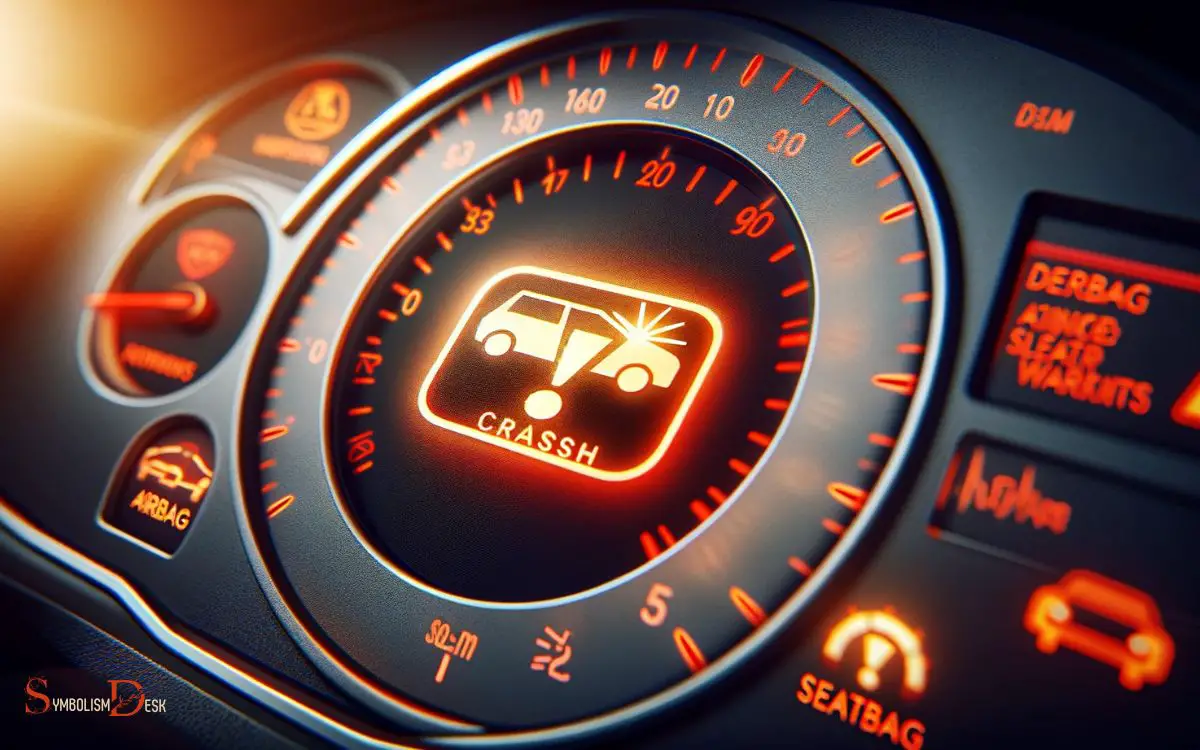
Resolving Common Issues
If any warning lights remain illuminated after the engine starts, it indicates a potential issue with the corresponding safety system. The driver should refer to the vehicle’s manual to interpret the meaning of each warning light.
The car crash symbol on the dashboard can sometimes be accompanied by other common issues such as the check engine light, low tire pressure, and oil change reminder. These alerts are designed to notify drivers of potential problems that need attention.
Understanding how to resolve these common issues can help ensure the vehicle’s safety systems are functioning optimally.
Check Engine Light
The check engine light indicates a problem with the vehicle’s engine or emissions system. When the check engine light comes on, it’s crucial to address the issue promptly to prevent potential damage or decreased fuel efficiency.
Here are some common issues and their resolutions:
Tighten or Replace the Gas Cap
- A loose or damaged gas cap can trigger the check engine light. Simply tightening the gas cap or replacing it can resolve the issue.
Check the Oxygen Sensor
- A faulty oxygen sensor can cause the check engine light to illuminate. Replacing the sensor can improve fuel efficiency and reduce emissions.
Addressing these common issues promptly can prevent further damage to the engine or emissions system. Now, let’s delve into the next dashboard symbol: ‘low tire pressure’. Addressing low tire pressure is crucial, as underinflated tires can lead to reduced fuel efficiency, uneven tread wear, and even potential blowouts. While monitoring this symbol, it’s also important to understand the oil pressure dashboard symbol meaning, as it indicates whether the engine’s oil pressure is adequate to keep vital components lubricated. Ignoring either of these warnings can compromise both vehicle performance and overall safety on the road.
Low Tire Pressure
Addressing the common issues related to low tire pressure promptly can help prevent potential accidents and ensure optimal vehicle performance. Maintaining the correct tire pressure is crucial for safe driving and extending the life of the tires.
Here are some common issues related to low tire pressure and ways to resolve them:
| Issue | Cause | Solution |
|---|---|---|
| Uneven Tire Wear | Underinflated tires | Inflate tires to the recommended pressure |
| Reduced Fuel Efficiency | Underinflated tires | Inflate tires to the recommended pressure |
| Increased Stopping Distance | Underinflated tires | Inflate tires to the recommended pressure |
| Tire Blowouts | Severely underinflated tires | Replace the tire if damaged |
Regularly checking and maintaining the tire pressure according to the manufacturer’s recommendations is essential for safe and efficient driving.
Oil Change Reminder
Upon noticing the oil change symbol on the dashboard, a driver should promptly schedule maintenance to prevent potential engine damage. Ignoring this warning can lead to decreased engine performance and even permanent damage.
When addressing the oil change reminder, drivers may encounter common issues such as confusion about the warning, or uncertainty about the appropriate oil type.
To resolve these issues, drivers can:
- Refer to the owner’s manual for specific information about the oil change reminder, including the recommended oil type and frequency of changes.
- The owner’s manual provides valuable insights into the vehicle’s maintenance needs, helping drivers understand and address the oil change reminder effectively.
Understanding the significance of the oil change reminder and its potential impact on the vehicle’s engine underscores the importance of seeking professional assistance.
Seeking Professional Assistance
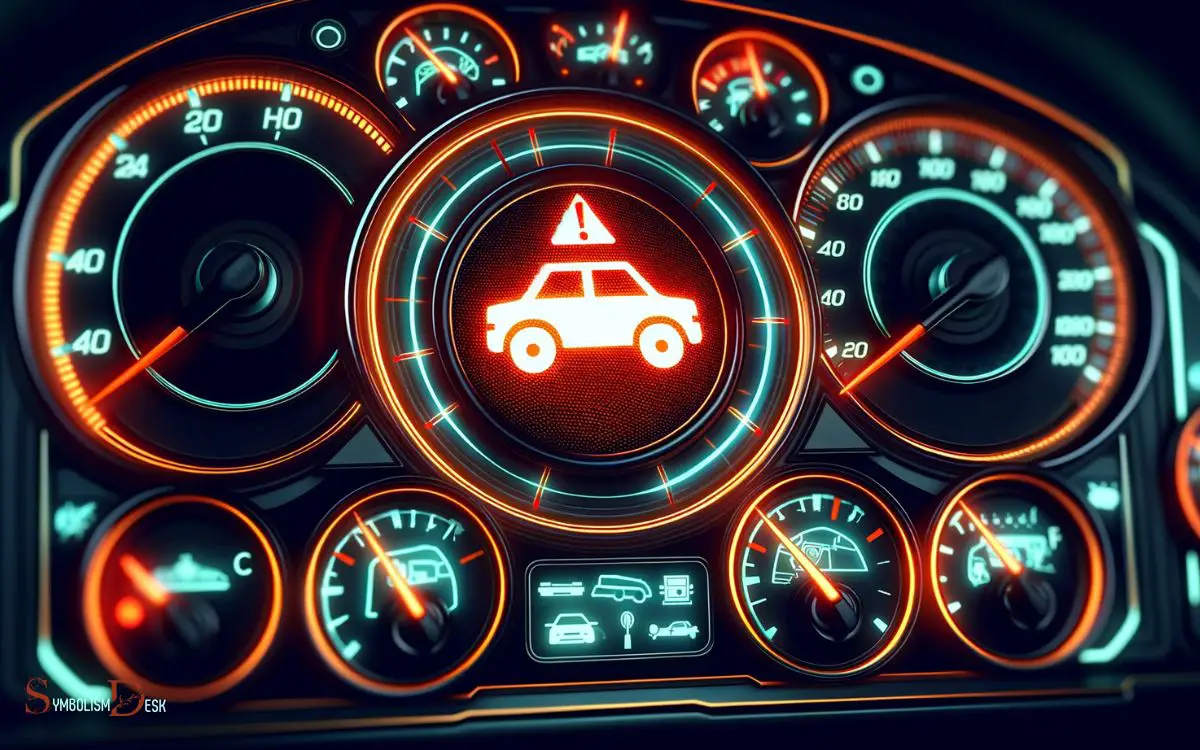
When a car crash symbol appears on the dashboard, drivers should promptly reach out to a qualified mechanic for a diagnostic inspection. Ignoring this warning can lead to further damage and compromise safety.
Seeking professional assistance is crucial to accurately diagnose the issue and ensure the vehicle’s roadworthiness.
| Reasons to Seek Professional Assistance | Benefits of Professional Assistance |
|---|---|
| Ensures accurate diagnosis of issue | Expertise in addressing the problem |
| Prevents further damage to the vehicle | Restores vehicle’s safety and reliability |
| Promotes peace of mind for the driver | Saves time and effort |
Professional assistance provides the expertise needed to address the underlying problem, preventing further damage and ensuring the vehicle’s safety and reliability. It also offers peace of mind for the driver, knowing that the issue has been accurately diagnosed and resolved.
Maintenance for Safe Driving
With professional assistance, drivers can ensure that regular maintenance is conducted for safe driving. Proper maintenance is crucial for vehicle safety and performance.
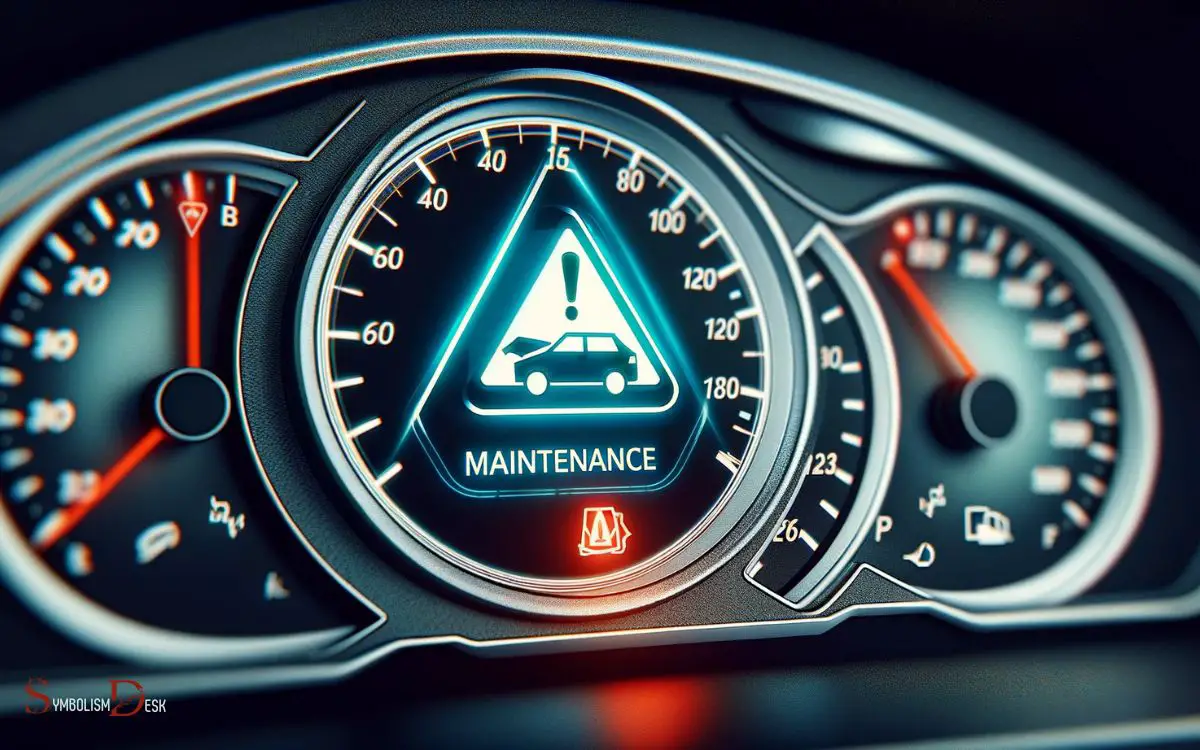
Here are key aspects to consider:
- Routine Inspections: Regularly check tire pressure, tread depth, and fluid levels.
- Tire Maintenance: Inspect for wear and tear, and rotate tires as recommended.
- Fluid Checks: Ensure engine oil, coolant, brake fluid, and windshield washer fluid are at appropriate levels.
- Scheduled Servicing: Adhere to the manufacturer’s recommended service schedule.
- Oil Changes: Follow the recommended intervals for oil and filter changes.
- Brake System Maintenance: Regularly inspect and service the brake system to ensure optimal performance.
Preventing Future Dashboard Warnings
To prevent future dashboard warnings, drivers should proactively address any warning lights as soon as they appear.
Regular maintenance and prompt attention to warning lights can help prevent potential issues and ensure safe driving.
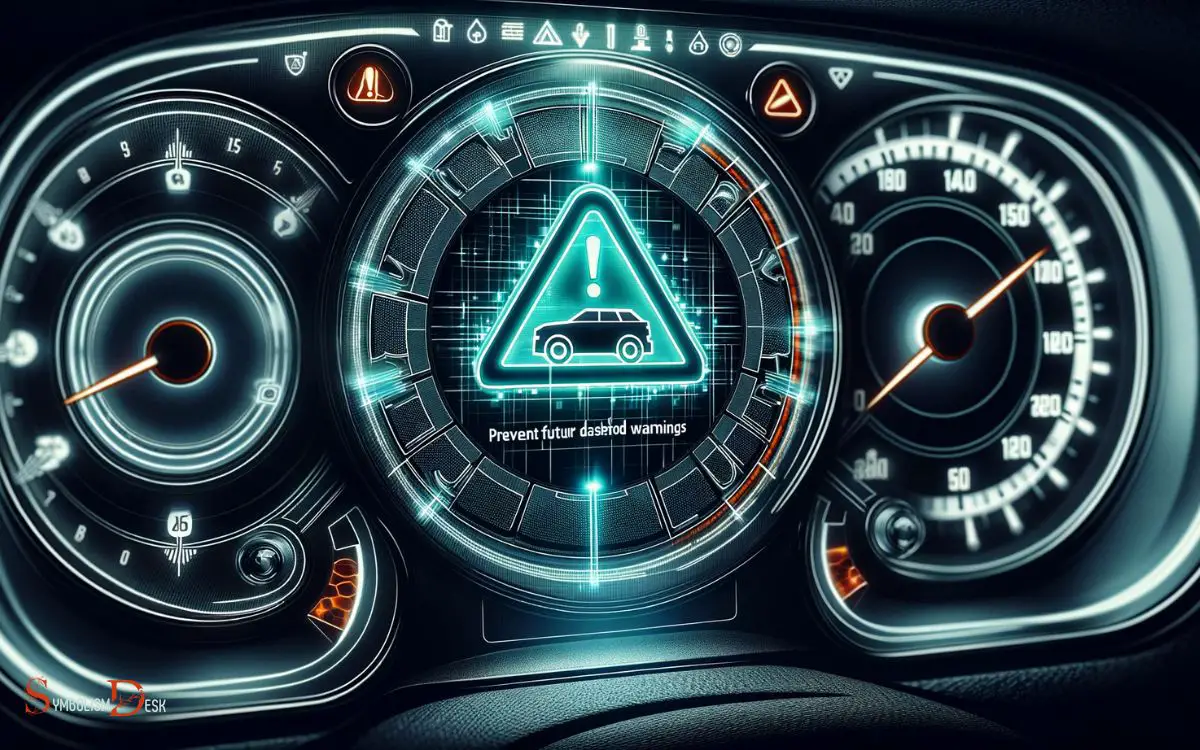
Here are some common dashboard warnings and their possible causes:
| Warning Light | Possible Cause | Action Needed |
|---|---|---|
| Check Engine | Faulty oxygen sensor, loose gas cap | Get a diagnostic test |
| Oil Pressure | Low oil level, oil pump failure | Check oil level and pressure |
| Battery | Faulty alternator, battery terminal corrosion | Inspect charging system and battery |
Conclusion
It is crucial to address the car crash symbol on the dashboard promptly to ensure vehicle safety and performance.
By taking immediate action and seeking professional assistance, drivers can resolve common issues and prevent future dashboard warnings.
It is important to prioritize maintenance for safe driving and to stay informed about the causes and implications of dashboard warning symbols.





